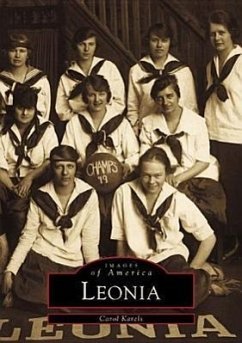An engaging visual history, documenting the creative ceneter of Leonia. Leonia was once a sleepy farming community on the western slope of the Palisades. Leonia was a crossroads of the Revolution and a training ground for Civil War soldiers. Prominent artists were first to arrive. Its proximity to New York City's major universities, performing centers, theaters, galleries, and art schools has contributed to making the town a home for many of the twentieth century's foremost artists, scientists, and academics. With hundreds of vintage photographs, Leonia offers the reader an overview of a town that has been called the English Neighborhood, West Fort Lee, and the Athens of New Jersey.Leonia explores the fascinating town that was settled in 1668 by Dutch and English farmers. The town remained a farming community until the late 1800s, when it experienced enormous economic and cultural growth. Advances in transportation, such as the West Side subway, the ferries, and the trolley systems, made it possible for many to commute to the city. This pictorial history illustrates how Leonia soon became a haven for some of the nation's most creative minds, including five Nobel Prize winners.
Bitte wählen Sie Ihr Anliegen aus.
Rechnungen
Retourenschein anfordern
Bestellstatus
Storno

